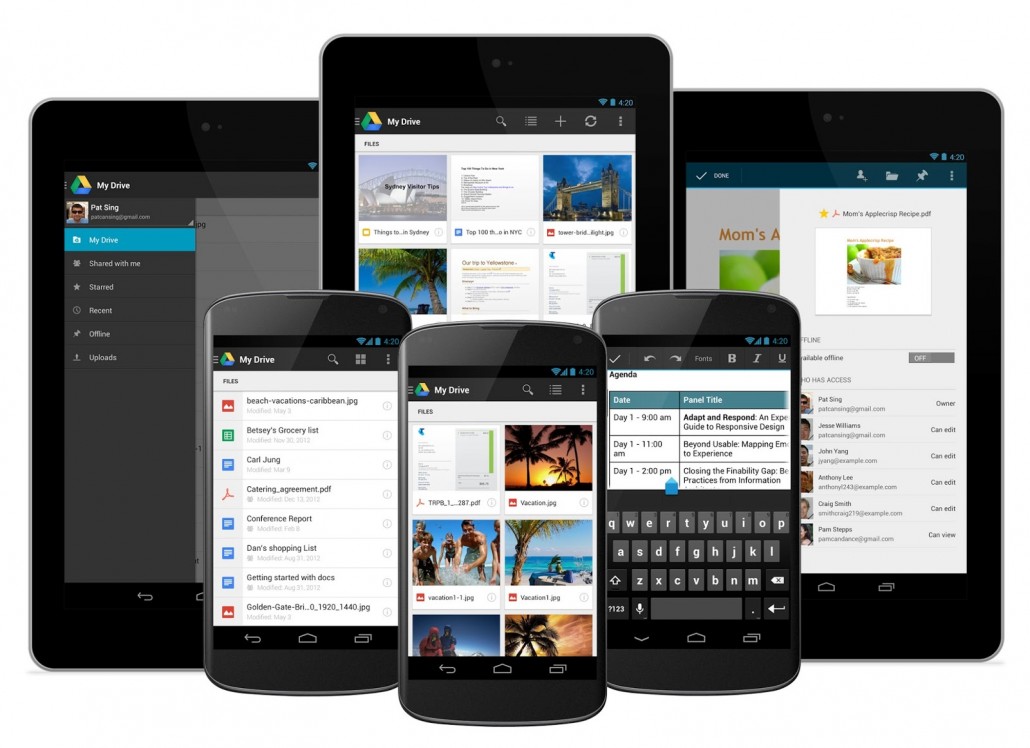
Everyone wants to be as effective as possible at his job, and to be effective one needs to have deep knowledge of his or her business. Whether you’re a salesperson or a marketer, your job effectiveness most likely depends on how well you know your products, customers and markets. But people struggle with unearthing the critical information that will take them to the next step, and according to an IBM study “From Stretched to Strengthened Insights,” 66% of companies lack an in-depth understanding of their customers. This leaves them with a huge gap that they try to bridge by spending an inordinate amount of time searching for key insights, hidden in a sea of information overload.
But you can work smarter, not harder, and drive more revenue by making sure of a few critical things:
Having the right information at your fingertips is key, but what you do with it is just as important. Our own customers report a 17% increase in productivity increase for Sales Reps using Personal Business Analytics. By making sure that you use the information to your advantage, you to can drive more revenue while spending less time on tasks that are killing your team’s productivity.

FirstRain today released its third generation of mobile apps for iPhone, iPad and Android, and a brand new app for Windows 8 phones. The apps now include social sharing, analytics and configuration integrated within the Personal Business Analytics mobile experience. These new upgrades mean that users can continue to see developments deep in their customer’s businesses and take the right actions to grow their revenue.
Mobile is now more important than ever to the executive agenda, but it’s important to do it right. Our app has already proven to be a hit with our customers; Todd Keiner, the managing director for strategic marketing at Pfizer, said, “FirstRain is my go-to mobile app, unlike many other general consumer apps, it provides a very personalized view of my markets and customers enabling my team to understand where opportunities exists that can provide mutual business value, even when I am out of the office.”
In order to continue to deliver an exceptional user experience and help our users see better productivity and more revenue, we have rolled out the following enhancements:
For more information, you can read the full press release here.

Congratulations to Chris from Siemens, the winner of an AppleTV! Chris attended our webinar for strategic account managers, Develop More Strategic Relationships with Personal Business Analytics.
Didn’t get a chance to attend the webinar? Check our events page to register for a future session.

The world is more social than ever—and selling is no exception. But as Salesforce.com points out, the conversation around social media has been focused on marketing instead of making the sale. However, salespeople can and should take advantage of social selling to drive more wins and increase revenue.
But where to begin? The insights are out there, but where do you look for the most actionable and strategic, and then draw them out? Personal business analytics enable salespeople to use social selling techniques to reach prospects and win sales by not only showing them exactly the information they need to understand their customer’s business and their own market, but by allowing them to share critical insights as well.
To excel at social selling, there are a few key steps.
Salespeople are usually very social people by nature, and by equipping them with the right tools, you can harness and direct their sociability to improving sales.

Time is money, and salespeople often find themselves with too little of both. They are constantly trying to figure out how to become more efficient and shorten their sales cycle, in order to win more deals and meet (or exceed) their quota faster. It is a huge task, but there are a few ways you can, at least, make the most of your time.
1. Target the right people
Though salespeople wish that everyone would buy from them, that’s unfortunately not the case. So don’t waste time targeting the wrong people. Understand who and what teams in the organization would most benefit from your solution, given their particular business needs and challenges. And keep a pulse on critical changes affecting them: did they miss their revenue goals? Are they getting eaten alive by their competition? Find the person or people who oversee these goals, and increase your own sales productivity by not wasting time with someone who really won’t be interested in what you provide.
2. Aim high
According to Mark Suster for Inc., instead of pitching your product to a lower-level employee, you can increase your sales productivity by cutting out the time you’d have to spend giving demos and repeating yourself to many different levels of the organization by going as high up as possible. People higher up in the organization have buying authority, or direct access to the person who does. If you’re pitching to a senior executive, they may even send you down to the person who actually does the purchasing—and you’ll have executive endorsement.
Having a champion is invaluable, but if you’re pitching to an executive, you must make sure that you’ve done your research so you don’t waste their time. Executives are busy people, and if you don’t wow them on your first shot, the odds are that you won’t get another. Prepare by using a personal business analytics solution that will help you align your value proposition to exactly how it will solve their specific business challenges.
3. Create value
A salesperson’s job is to sometimes lead the customer to the correct conclusion. In order to do that, you need to truly understand their business. If you point out challenges and opportunities that they may not have even realized and then suggest a solution to address them, they will see you as a trusted advisor. Because there is so much information out there about your customer and their markets, only with access to personal business analytics can you truly understand how your solutions can benefit them, based on their particular customers, competitors and market.

As mobile technology becomes ever more pervasive, enterprise sales managers have realized that having access to the right data, 24/7, no matter where they are, is an incredibly powerful tool for their sales teams. If it delivers the right business insights to the user, high-performing organizations can use mobility to increase deal size, decrease sales cycle timelines and profitably improve sales activity, according to Selling More with Mobile Solutions by Accenture.
The CSO Insights 2012 Sales Performance Optimization Study found that 97% of companies are actively using or starting to use tablet devices in their sales organization—and just about every business now realizes the upside of mobile. But a big problem for many companies is that they don’t have a targeted strategy for how their salespeople use smartphones and tablets, and nothing in place that will effectively drive mobile adoption so they can integrate is as part of their official workflow. To drive mobile selling, you need an app that can help salespeople:
Many enterprise apps struggle to gain adoption because many sales people can’t identify the big incentive: something that proves to their sales force that using mobile for more than just phone or text messages will win them more deals. Using personal business analytics on mobile means that salespeople have access to critical business insights at their fingertips—so no matter where they are, they can understand how to engage their customers about the critical events that are affecting them as they happen, helping them improve relationships, win more deals and drive more revenue.

A colleague in sales sent me a blog post by Mike Troutman the other day called, “Hey Marketers, Don’t Forget Your Biggest Customer.” In it, Troutman says that sales teams feel forgotten by marketers—but, as the marketing communications person here at FirstRain, I know how much time we in marketing spend trying to push content out specifically for the benefit of sales. And I know from talking to others in the industry that this disconnect is extremely common—and the implications of it are staggering to behold: 70% of marketing material is never used by the sales team, although 84% of marketers have uploaded collateral to their CRM. And 51% of sales teams say the biggest time waste in their day is trying to find collateral.
Setting my personal situation aside (I’ll deal with those sales folks later …), while reading Troutman discuss how salespeople are trying to find material they can use to drive more revenue, I couldn’t help but notice how similar that is to the challenge sales people experience in trying to find information they can use to find more opportunities, spot risk and really understand a customer’s business. Much like the salespeople in the article looking for usable collateral, many sales reps these days waste an incredible amount of time searching for customer insights that are really actionable.
In the content arena, Troutman notes that usually marketers just upload content to their company’s CRM, send an email alerting the sales team that something new is available, and that is that. That method assumes that “each salesperson has been trained and is competent in search and retrieval of collateral,” and the organizational structure of how the material is stored isn’t necessarily conducive to all users’ style.
The same is true with trying to find customer insights—but even more so. They’re out there, but throwing the salesperson into Google to find information that is relevant to them assumes that he or she is “competent in search and retrieval” of information. Even if he is particularly adept at search, the Web is just too big to see everything he needs to, and there’s too much noise for them to find the needle in a haystack they need to understand what drives their customer. To be able to drive more revenue, they need a solution that delivers relevant, timely customer insights that are personalized to the accounts they care about most—without them having to work to find it.
That’s exactly the problem that personal business analytics solve. The areas of interest are personalized to what they need to see and understand in order to drive more revenue. Customer insights from across the entire Web and social media are packaged up and delivered directly to the rep to the places they already are, whether that’s the company CRM, their email, or on their mobile device—whatever works best for them.
Personal business analytics deliver the sales teams “what they use and what is effective” and “reduce the time it takes to locate content”—the key things Troutman says marketers need to do to help their sales reps be more efficient and productive.

In this day and age, where widespread distribution and globalization is a given for enterprises, just knowing who is selling in a particular geography isn’t enough. We see with our own customers in industries like manufacturing that a major shift is needd in how data are used to make decisions. In fact, as DISC Corp.’s Herm Isenstein points out in The Art and Science of Sales Forecasting in the Electrical Market, “in what sense is supply equals demand meaningful when we know distributors are located in nearly 1,400 counties and that… end customers are located in about 3,100 counties?”
Isenstein is talking about the electrical supply industry in particular, but the same principle applies to any company that sells into many different geographies. With distribution so broad, it’s foolish to assume that buyers in drastically different markets have the same buying triggers, problems and priorities—their demand is almost undoubtedly different. Isenstein says in his piece, “Identifying demand is the most crucial element for measuring performance where the action takes place, at the trading area level.” And that’s why, in order to increase sales and sales productivity, it’s important for sales reps to know what the demand side is thinking in their specific market.
It would be extremely difficult to find the detailed information a sales rep need to be able to understand a specific trading area without one pointed, go-to source, and in many organizations today, reps are sifting through hundreds of noisy sources, making them less productive than they would like. More than ever, it’s important for sales productivity and forecasting accuracy to be able to understand what buyers in a particular market are saying about a certain need or problem they have, because it will help them be more effective during customer meetings and more accurately forecast their sales.
Personal business analytics allow users to see trends the particular market/s they care about, as well as understand what their end-customers care about. For a company who has sales across the country (or the world), being able to personalize what a rep sees means they’re better able to discover opportunities on the ground in their particular market by understanding what that market cares about. Because we’re acutely aware of these dynamics, FirstRain customers experience tailored, relevant information through personal business analytics—delivering the information that Isenstein believes sellers need, but can’t currently get.

Most company executives know they need to jump on the big data bandwagon. They understand that having access to big data analytics can help them raise sales productivity, and so they’ve sourced a solution to take advantage of gathering and indexing their internal data. Maybe they’re even enlightened enough to look outside of their own sales data into the wild, wild Web for information on their customers.
But is the data they’re collecting really helping their employees? In an enterprise—and even within the same sales organization—it’s unlikely that employees will all benefit from the same business intelligence. A sales rep is unlikely to care about the buying activity of another account; and a VP certainly doesn’t have enough time to look at every customer and prospect in great detail (that’s why they have sales reps and account managers in the first place!).
It’s well known that if someone doesn’t find a product useful to them personally, even if it’s a great product in and of itself, they simply won’t use it—and that’s not helping sales productivity, which is the reason it was introduced in the first place. But what if they could customize the product to fit their needs exactly? The same holds true for big data: for data to be truly helpful to each and every employee, the business intelligence has to be personal.
Let’s take a deeper look at the differences between what an SVP needs to know versus what an account manager needs. According to Anthony Iannarino on SalesGravy, his number one non-personnel focus is ensuring a healthy pipeline. To do that, he is focused on:
The sales rep, on the other hand, is involved in the nitty gritty:
It’s clear that the two have very different priorities, so giving them the same information is not only inefficient, they won’t use it—so it won’t be effective. By giving each of them business intelligence customized to their needs, however, allows each of them to target what’s most useful to them. The account managers can see their target accounts and geographies to help plan out their next sale, and the SVP can strategize a more informed direction of attack, raising the sales productivity of the entire organization.

Shortening the sales cycle can lead to an improvement in sales productivity. The shorter your sales cycle is, the more prospects you will be able to reach. On the other hand, shortening the sales cycle can be a monumental task, which may have to begin with reassessing your entire sales strategy.
1. Define Your Sales Strategies
In an article for Salesforce blog, Jason Jordan describes the importance of creating common definitions for sales terms. Until your team members are all operating under the same expectations, it will be difficult to make these procedures more efficient. Do all your people have the same definitions for company-wide sales processes? You may be surprised. Jordan describes an experience at one firm where two sales managers had vastly different pipelines because they had different opinions of what types of leads should be entered into them. These kinds of discrepancies can lead to confusion among sales teams. Neither method was wrong, but the inconsistency was causing problems. Make sure all your sales reps define and qualify leads the same way.
2. Eliminate the Junk
Most sales reps talk about qualifying leads, according to Tibor Shanto in a Salesforce blog. However, when you’re trying to whittle down your sales cycle, what you really need to work on is disqualifying leads. It’s often more efficient to focus on eliminating the prospects that aren’t going to convert so you can focus on the ones that will. This may require more work as well. While you’re defining a consistent sales strategy, also think about a procedure for getting rid of weak leads. As Shanto puts it, if you mistakenly eliminate a good lead, you will always be able to give them a second try. Your time, however, is a precious resource that you can’t get back.
3. Define Objectives
Shanto also notes that businesses are quick to pounce on solutions that help them avoid negative consequences or situations. While many sales reps pitch “solutions” this very term implies a problem that buyers probably don’t want to think about. The best way to demonstrate your product or service’s ability to solve this problem is to provide a measurable objective that you can help them meet. Rather than telling your prospect you can solve X issue for them, avoid mentioning the problem entirely. Instead, tell them you will deliver X objective. Put it in positive terms. In order to do so, however, you’ll have to do a fair amount of customer research. Determine the prospect’s needs and what their market looks like. Making it easy for prospects to say “yes” shortens the sales cycle.
4. Aim High
Aiming your pitch at decision-makers can cut some time off of the sales cycle if done correctly. Most sales reps tend to play it safe by calling someone at a lower level and getting the message passed up to higher management slowly. However, since these individuals don’t actually have the buying power, negotiating with them is often a waste of time. In Inc., Mark Suster suggests that reps aim even higher than the decision-maker. Instead of reaching a project manager, aim for the CEO or CTO. They will likely inform you that they aren’t involved in the decision, and will pass the query down to the person who is. However, the high level executive will probably have the power to prioritize the project. On the other hand, these individuals will also be able to shoot down the project immediately, allowing you to disqualify them as a lead. On top of these benefits, starting high can help you start to develop a relationship with the company. Before making the call, learn as much as you can using customer intelligence so you know how to make your pitch in a way that will make them respond.
